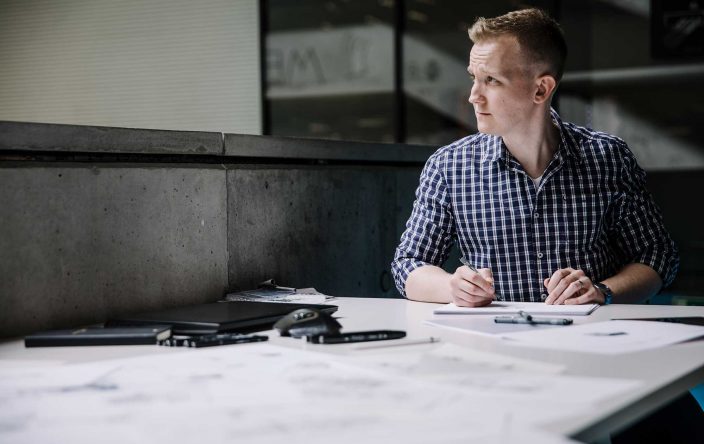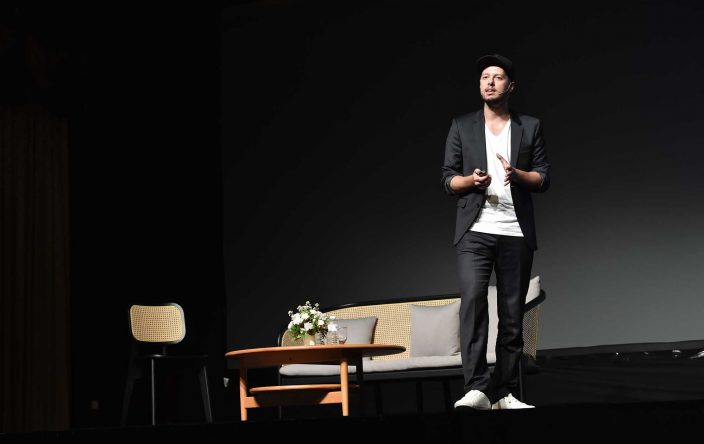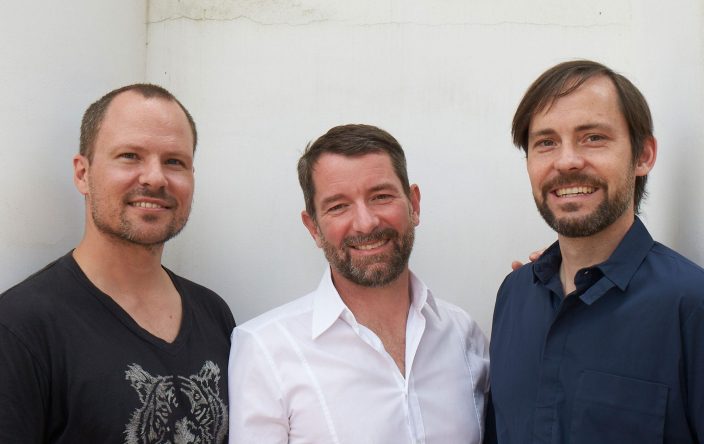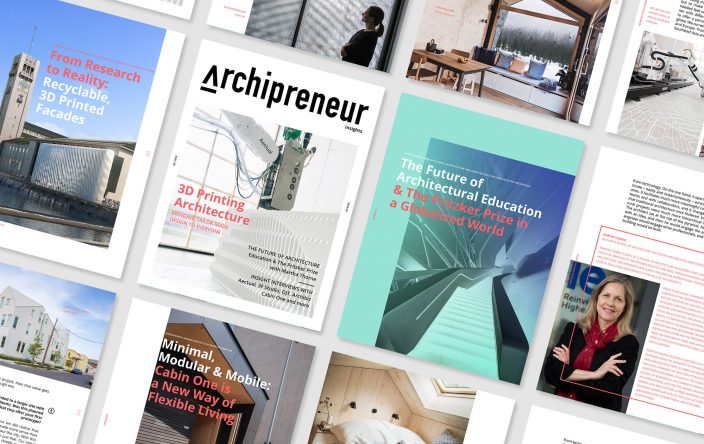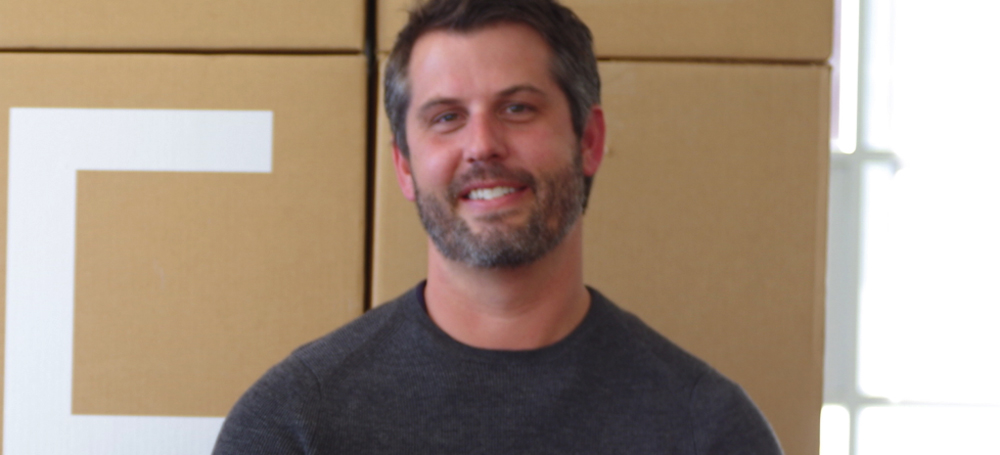
How to Create Great Places – Tyler Stonebreaker on His Real Estate Company Creative Space
Do you want to get into the heads of the top initiators and performers in the field of architecture, building and development? If so, we heartily welcome you to “Archipreneur Insights”! In this interview series, we talk to the leaders and key players who have created outstanding work and projects. Get to know how they did it and learn how you could do the same for your own business and projects.
This week’s interview is with Tyler Stonebreaker, founder and CEO of Creative Space, an integrated real estate company that transforms buildings and places into ‘housing’ for the most innovative businesses, brands and people.
Tyler started out in corporate real estate and developed millions of square feet of office, retail and production facilities throughout California. But after 10 years of being in the business, he became tired of it. After a sabbatical, Tyler followed his intuition and founded Creative Space in 2009, a real estate company that specializes in working with businesses in the fashion, music and entertainment industries – and mostly for the people he knew.
Keep reading to learn more about place making, from the founder of the not-your-average real estate company!
I hope you enjoy the interview!
When did you team up with your business partner Michael Smith and what are your respective backgrounds?
Michael and I met as kids on the Southern California junior tennis circuit. He ended up going to college in Chicago while I stayed here in Los Angeles. About a decade and a half passed before we ran into each other again, at a reunion of sorts in Santa Barbara. Turned out we were both living in Los Angeles and had similar interests. Michael, as a successful music entrepreneur, and I was just beginning to formulate the conceptual framework for Creative Space. Initially, Michael acted as an advisor. Within a short time he became a client – and then eventually a partner. Although he’s no longer active in day-to-day affairs, he still plays an influential role for me and for the company.
What made you decide to start Creative Space? Was there a particular moment that sealed the decision for you?
I had spent my entire career in real estate but never really felt that developing generic “spec” buildings for hypothetical customers whom I didn’t have any real connection to was a worthwhile way to make a living. As time went on, my personal and professional lifes became more and more separated – to point that I was super unsatisfied, and decided I needed to make a change and leave the real estate business altogether.
So I took a sabbatical in the mid-2000s, with no plan to ever return to the business. Then, after spending about a year traveling and wandering the boardwalk between Venice and Santa Monica (where I lived at the time), I had the proverbial light-switch moment while drinking a cup of coffee at a local café near my house. Two film producers sitting at a table next to mine were talking about a building they wanted to invest in.
That triggered an immediate “duh” moment: most of my friends worked in the entertainment industry here in LA and they all needed real estate for their businesses. Why not build a company to help them? I set out to build a business that would help my friends develop offices, studios, production/post facilities, etc.

In Creative Space’s manifesto it says, “It takes a coffee shop to build a village”. What’s your secret to creative urban placemaking?
Understand first and foremost who and what you’re building for, and make sure you respect the community(s) you’re impacting. Ironically, the local community is most affected by real estate decisions, but rarely are those decisions made by or for the local community.
At Creative Space we’re not curating or speculating or developing buildings for “people” based on demographic studies or Pinterest boards. Rather, we’re facilitating real estate for the people we know and respect. As a result, we feel a personal connection to our clients, and our respect for the local communities we work in leads to better outcomes.
Among your first clients were Handsome Coffee Roasters, Stumptown Coffee Roasters and Counter Culture Coffee. What does it take to create great places?
Fortunately for us, we have amazing clients who make these places great. Our job is to facilitate and support them with an integrated real estate team and process.
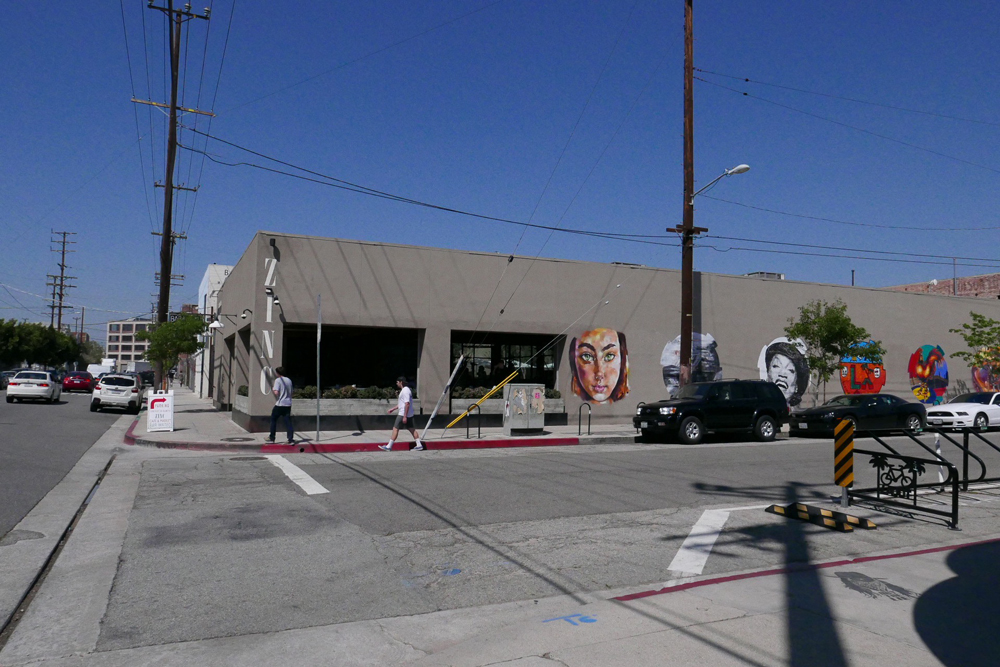
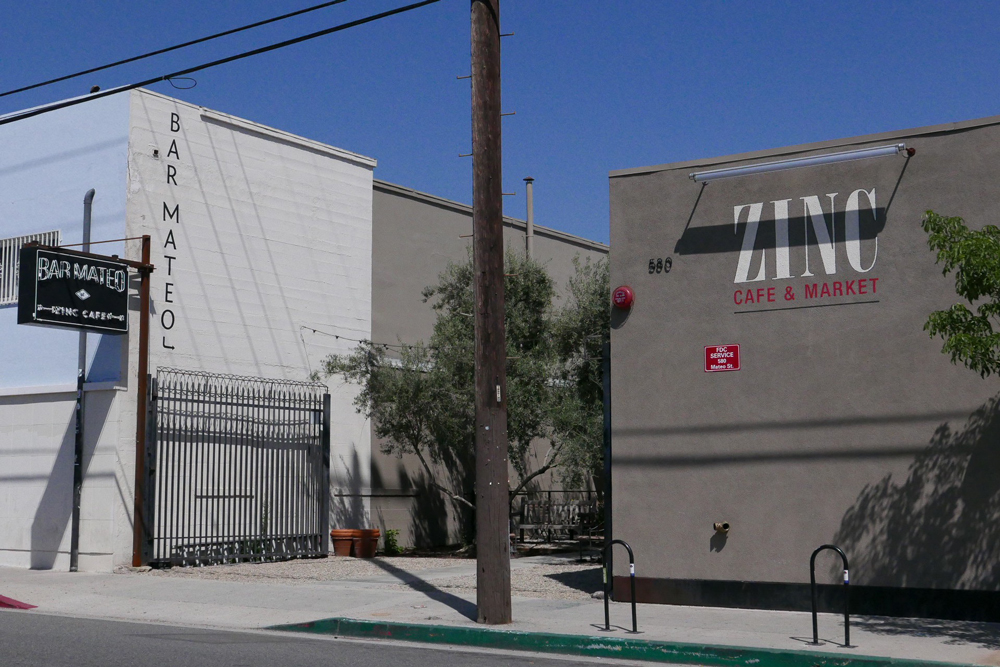

What clients do you work for now?
We work with a varied mix of clients and projects, ranging from an art center for Hauser Wirth & Schimmel through a 67-room boutique hotel for Grupo Habita to a multi-facility expansion for Tartine Bakery.
Your company handles marketing, development, architecture and other aspects of the realty process. How many people do you employ and what kind of professional background do they have?
Our team’s collective experiences, backgrounds and interests are the foundation of the company. From my previous time in institutional development and investment, what I knew was that most real estate companies employ a very narrow group of mostly finance- and sales-related people – especially at the decision-making level – who often have very little technical knowledge of how buildings actually work and function.
We decided to put architects and engineers behind the wheel, so to speak, as the developers/producers of our projects. Under their direction, we offer all of our projects/clients a full range of real estate services. We produce a very high volume/range of outputs throughout LA/SF/NYC with a small, highly focused team (10 people in 2 offices) who harness today’s leading productivity theories and technologies.
To us, it’s not about how many people we have or how much money we’re making or even what articles are written about us; rather, it’s about doing work for the people/businesses we believe in, and in making a relevant and sustainable impact on the cities we live and work in.

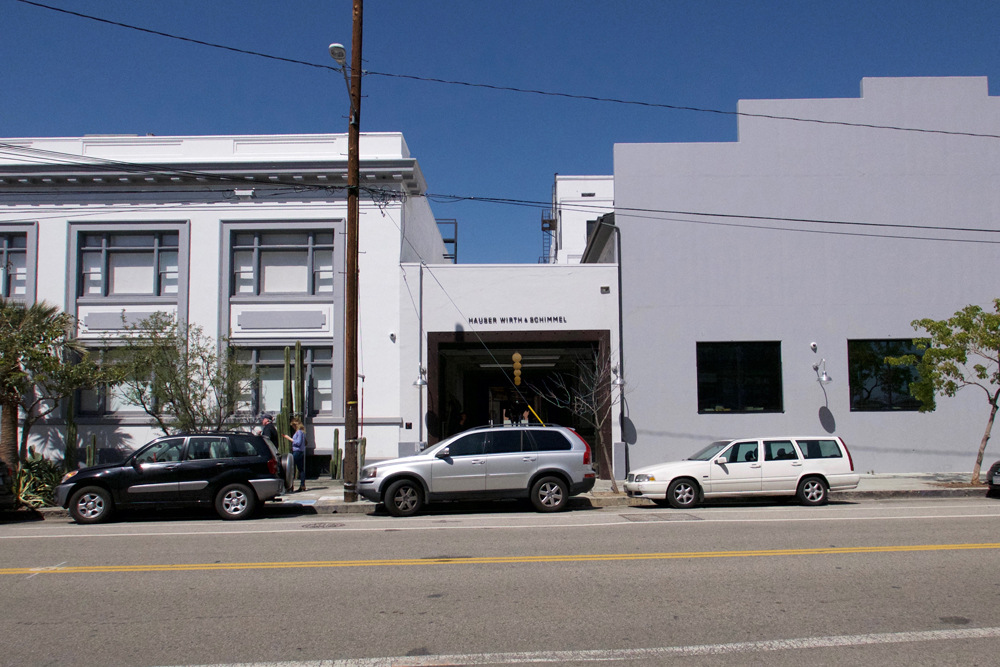

Another statement from your manifesto says, “Repurposing is the new building.” Do you build at all, or is architecture a commodity you buy in?
There is a component of building/construction on almost every one of our projects but, generally speaking, most of the building/construction we do is through adaptive re-use. Our first Creative Space project was a ground-up 100,000sf Gold-LEED certified, 100% solar powered corporate headquarters and manufacturing facility for a contract furniture brand located at Hawthorne Municipal Airport. The property itself is part of a former Northrop Grumman aerospace manufacturing facility that was reimagined through a brown-field redevelopment, eventually becoming home to SpaceX and Tesla.
Since then, most of our work has involved adapting existing structures for commercial use and more recently for residential use as well.
Is your business acting as a service developer for companies or are you also taking on the trader-developer role? Are you also buying land and property, which you then develop and sell?
From day one, our core objective was to advantage our friends by helping them source and develop great buildings/locations around Los Angeles, San Francisco and New York City. At the end of the day, the market is placing the highest premium on things that are unique and special. But over time we’ve learned that there isn’t just one way; in fact, there are almost an infinite number of ways that unique and special buildings/locations are sourced and put together.
Thus, we view everything we do through a simple lens of inputs and outputs driven by our client’s needs, and we are constantly focused on improving how the inputs we utilize lead to better outputs. The fact that two roads can lead to a single destination just as one road can lead to more than one destination is something we keep in mind with everything we do. In terms of how we’re compensated, we are very adaptable. Sometimes we are just paid flat fees while other times we invest capital alongside our clients to acquire/develop projects.
More recently, we have been focused on investing in many of our clients’ businesses as well, as we see it as a natural way to better align with our clients on a long-term basis (plus it’s a smart hedge against the cyclical nature of real estate markets). We don’t speculate in neighborhoods trying to trigger hyperinflation to make a quick buck via arbitrage or get in the way of great things happening for the sake of it “just being the name of the game”. That is unfortunately how most of the real estate industry operates.
We believe that the primary customer of real estate (i.e., the tenant) should always be at the center of the equation and the real estate industry should be squarely focused on providing their customers with what they need and want. However, tenants are at best a means to an end in most landlords’ eyes, with customer service viewed primarily as a cost (which, coincidentally, is generally passed through as an operating cost that is then paid for by the tenant).
Hence why it’s been so easy to build our business from the start – because the only thing we set out to do was to deliver what we knew our friends (and most people, for that matter) wanted – great real estate and great customer experience!
For architects who know very little about real estate development, how would you break down the process of getting their first project off the ground?
We think the best place to start is by understanding what people want from their real estate. Getting the first project off the ground can be a lot easier to say than do, given the technical knowledge and experience required, although if you understand customer needs, most of the (real estate) process can be outsourced to a variety of service providers that have the knowledge/experience required.
Most people seem to start on either the residential side and/or on small commercial remodels, which I think is wise. We just happened to have the capabilities and experience of developing millions of square feet of mixed-use projects in our previous corporate lives so we could develop a 100,000sf corporate headquarter project right out of the gate.
In that specific example, the owner/client was a close friend and he very much liked the idea of getting the benefit of our experience/capabilities while at the same time working with a new company focused on building towards the future.
How would you finance a project in its first stages of development? Any tips on how to manage it?
That’s actually the part we hate most about the real estate industry and development/investment business. More specifically, that is the $$$ part of it. Capital, in our opinion, gets in the way more than it helps.
From day one, Creative Space was focused on developing projects that were not speculative in nature. Thus, the capital side of things has never been something we’ve had to worry about as projects are funded based on cash flow and partially or fully occupied buildings, rather than a speculative basis through acquiring vacant or underutilized property to try and turn around by “adding value” and then selling for a profit.
My tip on this topic would be to either start with your own money (if available) or figure out different ways to finance projects based on a sound business plan, as money tends to find great deals.
What is your marketing strategy for pre-leasing spaces?
Great buildings/locations lease themselves (except when the economy drops into recession – then nothing really works). Since we work primarily with businesses, there isn’t much of a need for a marketing strategy. That being said, when property owners/investors (who we work with from time to time) ask us for business plans to help them acquire/reposition/lease a property, we start with understanding who would want to be in that property/location and then just speak directly to them.
We still apply our core strategy of advantaging our friends only; we head further upstream, so to speak, to make sure property owners don’t screw up their properties, and calibrate them to be great landlords in order to attract and service the desired audience (which in most cases end up being our clients, so marketing for us is perhaps a bit different than the traditional real estate marketing approach most people are accustomed to).
Great architecture and marketing materials will help, but not if the building/location sucks and/or if the landlord is un-calibrated. Also, because the real estate industry has gone head-over-heels for anything with the word “creative” in it, we’ve quickly moved away from the concept altogether (short of our name, which is not in reference to physical space anyway).
Buildings can certainly enhance/affect behavior, but buildings themselves are not creative; people are. So if landlords want a “creative” building, put creative people in them. Otherwise, the use of “creative” in real estate should go the way of disco.
Do you have any advice for “Archipreneurs” who are interested in starting their own business?
Focus on your personal knowledge/capabilities and listen/respond to the underlying needs of the marketplace. Everything should follow from there.
How do you see the future of the architectural profession? In which areas (outside of traditional practice) can you see major opportunities for up and coming developers and architects?
We think the more that technology replaces humans, the more important human activities and connections become. And, until we can figure out how to live as humans in cyberspace, we’re going to need to continue to live our lives attached to the ground in some form of shelter.
Kidding aside, we think there are so many important applications of architecture/development to address mankind’s needs. A lot of the things we’re worrying about today will seem trivial as the fundamental problems facing our world, from global warming to economic inequality, become more and more of an acute reality. With those challenges there will, of course, be major opportunities. Just different, perhaps, from what we’re all used to.
About Tyler Stonebreaker
At heart, Tyler is a creator. He was immediately determined to acquire, harness and utilize the tools required to build big things. After receiving his undergraduate and graduate degrees from the University of Southern California, he went on to develop millions of square feet of office, retail and production facilities throughout California.
After 10 years in institutional real estate development and investment, it became clear that the world was moving in an entirely different direction, and Tyler followed his intuition and founded Creative Space in 2009 to better connect the cultural world to real estate.
Join our Newsletter
Get our best content on Architecture, Creative Strategies and Business. Delivered each week for free.

JOIN THE
ARCHIPRENEUR ACADEMY
- 9 Stage Studio Growth Roadmap
- Library of In-Depth Courses
- Checklists and Workbooks
- Quick Tips and Tutorials
- A Supportive Online Community










